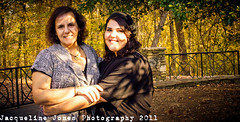When looking back at past eras, the 1950s is looked upon by some as an idyllic time in American history. The nuclear family headed by a male breadwinner was the desired norm and televisions shows such as Father Knows Best and I Love Lucy were popular. However, there was a dark underside during this era. Women were treated like second-class citizens and some were living unhappily married because their financial and educational options were limited.

The media, in collusion with the government, and family sociologists constantly espoused the virtues of family and children and women, who wanted more out of life, were looked upon as freaks of nature. However, some women during 1950s expressed dissatisfaction with their lives and an unarticulated longing for a life beyond their children and husbands. Some of these wives were forced out the workforce after World War II and felt resentment that their only option for financial stability was marriage. This unarticulated longing would lead to a major social upheaval towards the end of the 1950s and would be the beginning of the second-wave feminist movement. This movement caused a shift in family values and altered family structure for future generations to come. The 1950s Family Experiment would be short-lived but fondly remembered.
Family Nature
Several factors lead to the forming of the nuclear family. By the end of the 1940s, the divorce rate dropped sharply; the age of marriage feel to a 100-year low; and the birth rate soared. Women dropped out of the workforce as soon as they become pregnant and some young women had two or more children in diapers at once. Also during this time, the education gap between young middle-class men and women increased and job segregation for working women and men peaked. Limited educational and job opportunities for women made them more dependent on marriage for their financial well-being.
Young, newly married couples were encouraged to sever their family ties and put all their emotional and financial eggs in the small basket of the immediate nuclear family. Women were told by experts that all their energies should be used for their husbands and children, not aging parents and other relatives. Psychiatrist Edward Strecker and various colleagues argued American boys were infantilized and emasculated by women who were old-fashioned "moms" instead of modern "mothers".
Modern mothers placed their parents in nursing homes; old-fashioned mothers took their parents in at the expense of their own "important" nuclear family. A modern mother was not supposed to have friends, a job, or anything or anyone that would take attention from her husband and children. She was also supposed to grant early independence to her male child. It is no wonder that many women who believed in this advice and put it into practice ending up abusing alcohol or tranquilizers over the course of the decade.
Women were encouraged to confine themselves to a very narrow definition of "true" womanhood by a variety of sources such as family education specialists and marriage counselors, columns in women's magazines, government pamphlets, and above all television. These experts told women during the 1950s that their greatest role on the planet was to be wives and mothers. The role of a "real" woman was to have no interest in a higher education or a career and women were taught by these experts to pity women who had the nerve to want a life beyond being a wife and mother.
Televisions shows such as Donna Reed, Ozzie and Harriet, Leave It to Beaver, and Father Knows Best showed women how much easier their lives would be if their families were like those families and the I Love Lucy show warned women about the perils of what happened to a woman who wanted a career or if she schemed behind her husband's back (Coontz 38), The mothers on Leave It to Beaver and Ozzie and Harriet were immaculately dressed with pearls around their necks. Their homes were clean and their children never got into trouble. However, on I Love Lucy, Lucy usually looked terrible by the end of the episode. Her hair was at times standing on top of her head and her clothes filthy from her weekly adventure. Women and their families watched these shows and tried their best to emulate the perfect and bright lives shown to them on a weekly basis.
However, towards the end of the 1950s, a dramatic shift occurred. Cultural values changed dramatically and the children of these women found the social immortality of their parents sickening. Many young adults and their mothers would march in the streets to protest against sexism, racism, and militarism. Minorities and women began to receive the civil rights that were rightfully due to them and more and more women entered the workforce, forcing a dynamic shift in childrearing practices. By the 1970s, husbands and wives had begun to share household duties and women were no longer bound to their homes.
The concept of family has changed and sometimes it was for the best, sometimes for the worst. Although women have more rights, divorce is commonplace in our current society and many children live in one-parent households. Women are still discriminated against in American society and some us still do the majority of household work regardless of how many hours we work per week or if we have a house-husband. But we now have opportunities that would not have been imagined fifty-years ago. Children do not have to see their mothers treated like chattel and we almost had a female President of the United States. Nothing remains the same - ever. The constantly changing landscape of the American family owes a lot to the women of the 1950s.
1950s Family Life
No comments:
Post a Comment